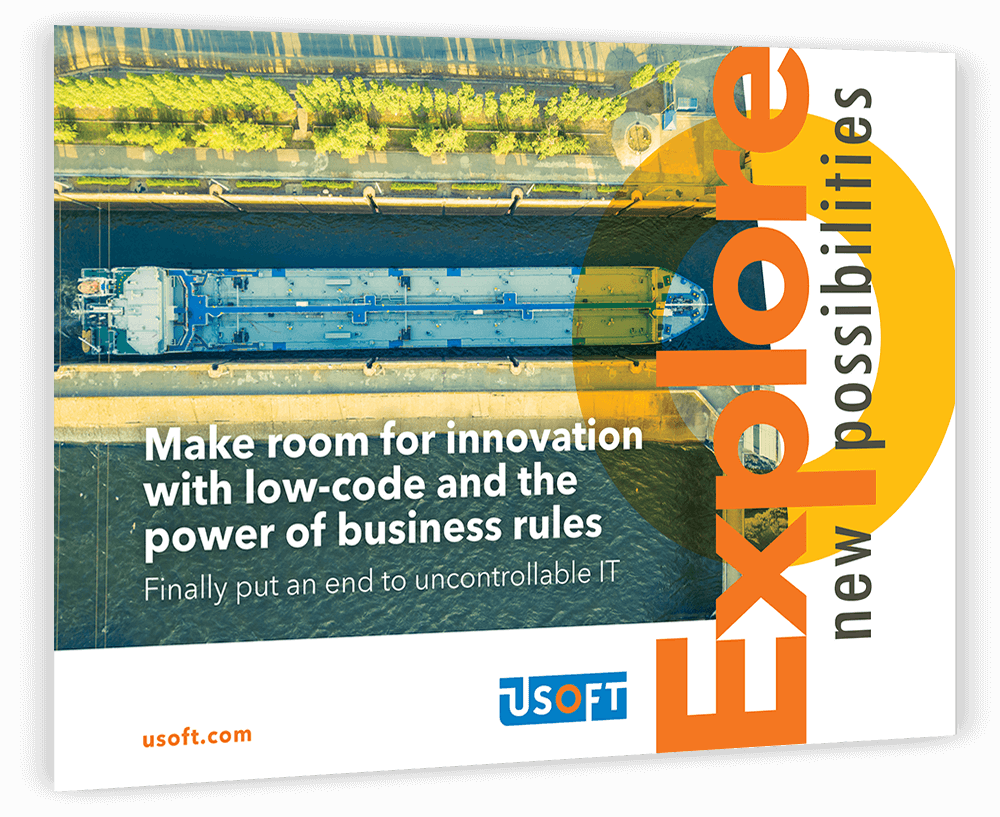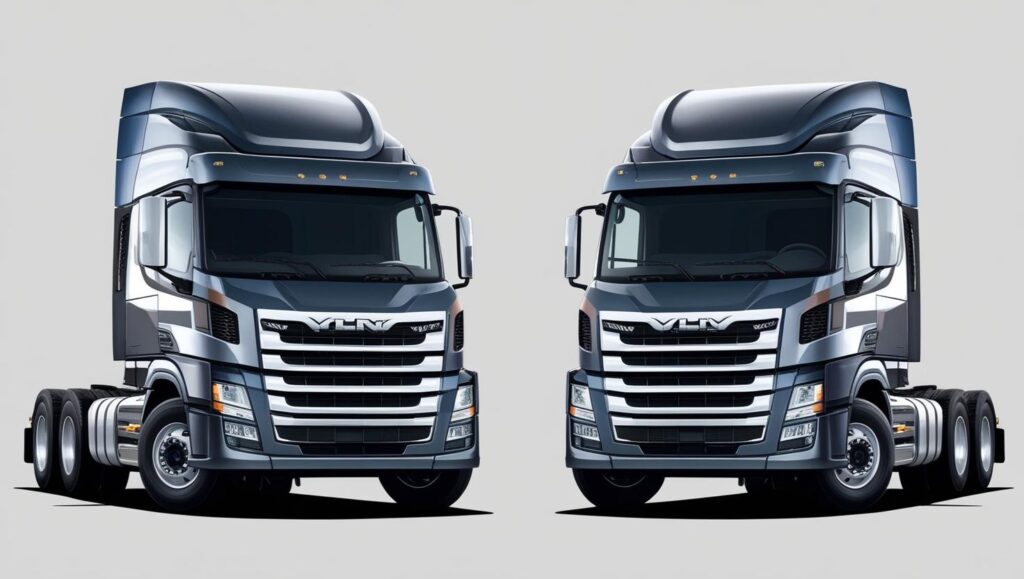Is your business ready to meet the challenges of tomorrow? Without knowing what demands the future will bring, every organization must be able to adapt and evolve with agility. Technology plays a key role in this effort: it can either take your business forward in time to meet the challenges of tomorrow, or hold it back – causing you to lose ground to more nimble and capable competitors. In this article, we examine some of the most significant challenges facing logistics companies in today’s unpredictable world. We’ll see which options are available, and how a more flexible IT landscape can help logistics companies adopt emerging technologies and accommodate evolving processes.
In logistics, every day brings a fresh challenge – and it can be hard to adapt quickly enough. These new requirements might come from the pressures of a competitive market, or from unpredictable events that disrupt established norms.
Any one part of this complex machine can be instantly disrupted by changes in weather, geopolitics, increasing costs, or emerging technologies and business models that threaten to overturn trusted processes and partnerships. And, because it has so many ‘moving parts, the ‘surface area’ of risk exposure is far greater in the logistics industry than in most sectors.
To protect its business, it’s essential that a logistics organization can be resilient in the face of this uncertainty, and adapt rapidly to new conditions. This often comes down to its software and IT landscape.
The evolving role of software in logistics
Software plays a crucial part in logistics; it supports practically every process. However, software can also become a constraint when it fails to keep pace with the new status quo. Despite the best efforts from personnel to improve processes and efficiencies (or create workarounds), the software and IT landscape can gradually become less and less capable of handling new demands due to a lack of flexibility.
The most advanced Commercial Off-The-Shelf (COTS) ERP solutions might well be ‘comprehensive’ when new, but after just a few years they become increasingly less suitable as new demands emerge. The same is true of a custom-built core application – indeed, any software can become outdated when it cannot evolve to meet new requirements.
To ensure that your logistics business retains the agility it needs, it’s critical to update your IT infrastructure so that software can support new requirements – whatever they may be.
It’s also important that you can make this change without causing disruption. New systems must slide effortlessly into place, fitting perfectly with current methods, while enabling agility, growth, and forward compatibility with whatever awaits beyond the horizon.
To determine which approach your business must take to improve its IT landscape, it’s important to highlight the most significant demands of the logistics industry, and see how each software option fits with these challenges and your business model.
#1: A need for total flexibility
There’s one guarantee in this dynamic industry: tomorrow will always be different. Meeting today’s demands isn’t enough; you must have the ability to adapt to whatever the future brings. From new customer demands and regulations, to new technologies – you need total flexibility.
Does your current software solution allow you to adopt new technologies like AI, or connect users with up-to-date information via web apps, push notifications, or portals? Can you easily meet new legal obligations, or monitor your environmental impact? How can you predict the needs of tomorrow?
As we all know, forecasting is far from exact – you cannot predict what capabilities are needed in the future. But what you can do is create a software architecture that allows you to add new capabilities at will, to adapt to new situations.
#2: Accommodating shifting business models
Business models can shift dramatically over time. Your company might become part of an intimate strategic partnership or virtual enterprise, become a subsidiary, or grow its reach into new regions. Working in partnership also requires close collaboration, and this can only be achieved when all stakeholders have sufficient supply chain visibility.
To accommodate new business models, it’s vital that your IT infrastructure can work seamlessly with the various technologies used by stakeholders and partners. This ensures that the efficiency gains of these partnerships are not lost.
It’s also worth noting that even the most advanced commercial off-the-shelf (COTS) solutions can depreciate over time, offering less of an overall fit with the evolving business requirements. What started out as a powerful ERP or WMS that could handle 95% of the business requirements can drop to only serving 60% or less of what is demanded, just a few years later.
A large investment in a COTS solution is harder to justify when the business model may change to meet new agreements or partnership models.
#3: Maintaining your unique advantage
In a market where competition is intense and margins can become wafer-thin, it’s essential you don’t lose your market share.
As new disruptive competitors enter the market, they do so unencumbered by legacy software. These newcomers can immediately offer the latest capabilities, so they can cherry-pick the best customers from the market while your own luster and market advantage fades.
Legacy software can constrain innovation, and prevent your business from offering new services or retaining a market advantage.
#4: Optimizing partnerships and value chain productivity
It’s not enough to update your own processes. In an interconnected world, your IT landscape must work with a variety of data connections and dependent processes that rely on partners and stakeholders in your chain. And these chain processes must always deliver the maximum possible value – but how can you optimize them and achieve visibility over your supply chain?
Being able to optimize collaborations and partnerships is a survival trait. You can gain greater operational resilience with agile processes that can, for example, automatically switch to the most efficient method or partner, using real-time data to select the fastest, cheapest, most environmentally friendly option available from your ecosystem. If a service disruption occurs in your chain, you need to know that it won’t affect your operations, because your software has made sure the impact has been mitigated with automated decision-making based on your own business rules.
#5: Tight cost control
Any number of factors can increase operational costs: staffing, fuel prices, inflation, warfare, pandemics, or other world/local events.
Without a crystal ball, it’s impossible to know which curveball will blindside your operations with unexpected cost rises. The only viable strategy is to ensure you have visibility and tight control over all costs, always. However, achieving the overview for this may not be feasible with your current systems, nor can they offer the ability to react in time. Logistics software must deliver the ability to dynamically update pricing or switch processes with intelligent process orchestration, so your margins and business are protected.

Options for supporting agile and resilient logistics with an improved IT landscape
Option 1: Do nothing
Just like hiding under the blankets during a house fire, this is not a good option. The longer the problem remains unaddressed, the bigger it will become, and the more ground will be lost to competitors. With each passing day, the current software becomes less suitable for the demands of the market, and restricts growth even more. But isn’t this what you’re doing now?
Option 2: Commercial Off-The-Shelf (COTS) software solutions
COTS are ‘plug-and-play’ software solutions (such as ERPs) made for specific industries. These can give an instant boost to your capabilities, but they come with a hefty price tag. While COTS solutions might seem to offer more than enough capabilities for the demands of today, they lack the ability to easily adapt to your unique processes (or future demands) without extensive custom coding. This means your business has no big advantage over a competitor using the same COTS solution. Furthermore, the issue will need to be revisited in just a few years. We can think of this as a ‘snooze button’ for your problems, not a future-proof solution. COTS software may be ideal, however, if your business model is well-defined, unlikely to change, and when the software offered covers almost every requirement you will ever need.
Option 3: Low-code (custom-built) solutions
Low-code platforms have gained a lot of attention for enabling businesses to rapidly build software. However, it’s important to understand that there’s considerable variation within the low-code space. They can range from simple ‘Citizen developer’ no-code and low-code platforms, to highly advanced low-code solutions that enable you to build sophisticated mission-critical software in very little time.
Without totally ‘reinventing the wheel,’ a low-code platform can allow your company to keep all the good parts of what you have now, and add new features as needed. In many cases, low-code can create a future-proof ‘wrapper’ around legacy systems, ensuring that disruption is minimized while opening the door to unlimited future capabilities.
Alternatively, legacy software can be fully replaced by using advanced low-code platforms that capture all the essential parts of existing software written in languages like COBOL, and turn them into modern solutions. Due to the modular construction of low-code software it is inherently easier to adapt, compared to a COTS solution or building software from scratch.
The greatest advantages are gained when low-code is combined with a business rules-oriented methodology, as this enables even greater agility. By using business rules, an organization can precisely define criteria for certain actions or processes. This might be something as simple as defining handling methods when items are shipped in certain formats – for example “items packed on pallets are always sent with a tail-lift truck” or “items less than 10kg are sent with partner carrier X.” Of course, the business still uses processes, but by defining the business rules, an organization is able to separate these from the contexts each process is used in, and this enables a software (and business) architecture to adapt more easily when conditions change.
This way, without needing to change the core software regarding processes, the business rules can be easily updated to reflect the new criteria for a process. For example, a contingency can be added so that any shipments going to a particular country or region need to be sent using a particular method, vehicle type, or accompanied by certain paperwork.
Care should be taken to ensure that a low-code platform can offer the ability to include custom-coded components when needed, so you’re not limited by what’s already pre-coded.
Option 4: Custom-coding (a.k.a. high coding)
By custom-coding your own software, you can create the exact solution you need. The downside is that this method requires the painstaking hand-coding of your entire solution – and this takes time.
While building your solution from scratch means you can precisely shape the right software for your current needs, by the time it’s delivered the market will have moved on and so will the requirements. The pace of innovation and change today makes custom-coding hard to justify.
High-coding is also a more error-prone way of developing software (compared to low-code), frequently leading to delays and higher costs. Unless the scoping of a project is very clear from the outset, these projects may never reach completion. A clear and complete set of requirements is a must for this solution.
A future-proof solution for resilient logistics
Modernizing core software is a daunting task; the complexity of existing processes and the natural fear of disruption means that there is reluctance to tackle the growing problem of legacy software. However, simply ‘doing nothing’ is also not an option in this dynamic world.
As we’ve seen, whichever solution you choose must offer the ability to adapt to future market conditions, new partnerships and business models, and new technologies when they emerge. A COTS solution can often provide most of the requirements you need, but will always require some customization to ensure you can accommodate your unique processes and cannot evolve in the way you want it to.
Building a custom solution is the best way for a logistics business to match the exact requirements, but this is best achieved with low-code: the development time is greatly reduced and the final product retains the ability to be easily adapted and enhanced with new features.
Modernization is entirely necessary, but it’s still not an attractive proposition. Like getting root canal surgery, the pain will only increase the longer you put it off – yet sitting down in the dentist’s chair is also not appealing. Plus, it can be hard to know where to start with this process.
For this reason, it’s a smart move to enlist the help of a modernization consultant. Using a USoft partner consultant can save a lot of time and money in the long-run, and give you the shortest path to your destination: unlimited future growth.
Learn more about low-code for the logistics industry here.





